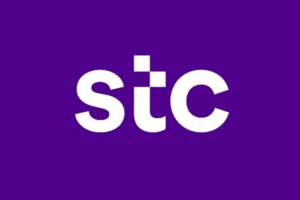Ali Ahmar from Brocade Communications explains how the region’s businesses can make their migration from IPv4 to IPv6 as pain-free and cost-effective as possible
When the Internet was created in the 1970s, no-one would have imagined just how ubiquitous its use would be. Today, nearly every man, woman and child ‘connects’ on a daily basis and even humble domestic devices such as refrigerators and cookers can be connected to the Internet to aid daily life. In 2010, Gartner1 predicted that 1.6 billion smartphones alone will shipped, each having its own IP address – illustrating the scale of the issue. Nielsen’s Global Online Survey for 2011, conducted across 55 countries, showed that almost half of the Middle East’s online consumers (43 percent) plan to use a mobile phone to access the Internet while 29 percent intend to use a handheld multimedia device and 24 percent plan to access the net via an in-home video game system. As modern communications evolve, the reliance on the Internet (and IP addresses) grows unabated. However, this demand has created an inflection point in the Internet’s very existence.
IPv6 – the new, replacement, addressing system for the Internet, the postcode for the web, the language on which our online world will be built in the future –is a looming ‘apocalypse’ heading towards network managers everywhere. The potential impact on businesses who are not IPv6-ready is immense. For example, online retailers could find consumers can access their websites, but can’t make an actual purchase damaging their bottom line, brand image and ability to compete. Premonitions of IT managers and CIOs (and ultimately CEOs) running from buildings screaming “who will save us?!” fill the media. But hold the front page; we have been here before haven’t we? Remember Y2K?
Ali Ahmar, Regional Sales Manager, MENA, Brocade Communications poses the question – Is the ‘IPv6 apocalypse’ vendor-induced hype, or something network managers and CIOs need to take seriously? In honesty, it’s both. Must organisations immediately rip and replace their entire IT infrastructure to prevent their businesses grinding to a halt? No.
Many Internet Service Providers (ISPs) and Internet Exchange Points (IXPs) are already taking action to ensure they can provide an IPv4 to IPv6 translation service for web users that will ease migration. This means most users will see little or no impact to their day to day online experience. Many enterprises, with senior managers and board directors having sleepless nights about ‘Y2K II – IPv6 Attacks’, will be pleased to discover that they already have IPv6-ready infrastructures in place without even knowing it. However, while there is no need for panic, IPv6 is something businesses (such as online retailers, banks, service providers, and content providers) need to start preparing for, and start preparing for right now.
Change of Address
IPv6 is not new. It was back in July 2004 that the Internet Corporation for Assigned Names and Numbers (ICANN) modified the DNS root servers to support the protocol, but with IPv4 addresses still available, no one really took much notice. However, IPv4 – the current addressing system used to date for directing traffic between devices to ensure delivery to the right server, computer or smartphone – can only generate a finite number of unique addresses (around 4.3 billion). With IDC2 just announcing that over 400 million smartphones were sold in the last three months of 2010 alone, and that it expects a 43-44 percent increase in the numbers of Internet connected mobiles in 2011, it’s easy to see why we are running out of IPv4 addresses at a rapid rate.
The challenge for businesses, especially those who have to serve large numbers of external requests for access to their systems and networks, is that IPv6 is not compatible with IPv4 technology. Which means a consumer with a broadband or dial-up modem that has been assigned an IPv6 address, won’t be able to access services held on servers running on an IPv4 architecture as – to quote Stephen Shankland3 in his excellent article on this topic – “an IPv4-only server has no way to talk to a computer with an IPv6 address”. So are we heading for an Internet blackout as people find themselves marooned on little IPv6-only islands of connectivity?
No. Despite some of dire warnings and fanfare, the Internet will not suddenly cease the day the last IPv4 address gets snapped up. Nor will enterprises find their networks collapsing and their ability to communicate with customers, suppliers and each other in the usual fashion come to a shuddering halt. There are likely to be some problems (speed and access may be patchy in places and at periods), but that is not why IPv6 is still a business critical issue.
Preparation, not Panic
The issue is that the transition to a fully IPv6 provisioned Internet will happen, so burying your head in the sand won’t work. Today, less than one percent of users currently access the Internet with IPv6 connections (Source: Google), but that will change pretty quickly as the world migrates to the new addresses. Unless businesses eventually want to cease engaging with consumers, preparation is key.
Some IPv6 addresses have already been issued, but it will take a while before the number of IPv6 addresses issued generates a ‘tipping point’ that could seriously impact business. Estimates suggest it will be another 12 to 18 months before the Regional Internet Registries run out of IPv4 addresses. However, as the number of Internet users continues to increase at a significant rate (up to 1.97 billion in 2010, a year on year increase of 14 percent4), it won’t be too long before the number of people and devices relying on IPv6 grows to a level where it will create a noticeable, and potentially profit-hitting problem.
So what steps should businesses take to make their migration from IPv4 to IPv6 as pain-free and cost-effective as possible? The best approach is one of migration over time versus any ‘rip and replace proposition’ (a high cost and high risk approach given the timelines involved).
The first thing you should check is whether you are already IPv6-ready. Some network providers have been offering IPv6-ready solutions that can run IPv4 and IPv6 for some time, so the question is more likely to be not “are we IPv6-ready?” but “where aren’t we able to run on IPv6 yet?” Some applications and services are far less likely to be impacted by the change-over, those that are ‘customer facing’ are those that are most sensitive and critical in migration planning. Where you are not IPv6 ready, consider your options. If you are already considering a full network upgrade as part of your overarching strategy, this is a good to time to clean-house. However, if you are not, then diligently review the solutions you require before taking action. There are dual-protocol point-solutions available that are specifically engineered to help organisations make the transition without the need for costly upgrades. The second thing to remember is that this does not need to be complicated.
By planning the migration in a series of stages – utilising solutions in a smart way that can help you through the process, and seeing it as part of your long-term network evolution – moving from IPv4 to IPv6 as standard does not have to be painful for you, or your external and internal customers.
Plan, Plan, Plan: Adopt a Trouble Free Transition
Once you know what you have, you know what you need for your business to meets its objectives and profit targets. An inventory of your network will tell you what you have to work with, and where you need to invest as a priority.
Use transition technologies such as double stacks, that help you manage the initial flow of IPv6 traffic, and don’t dismiss translation solutions. Early solutions were clunky and slowed traffic substantially, but upcoming new solutions mean you can run IPv6 and IPv4 without any noticeable impact.
Lastly, don’t see IPv6 as a reason to throw the baby out with the bath water, build your IPv6 planning into your product lifecycle replacement plan. Remember, you don’t need to replace everything today; you do need to start to act and build today. And it sounds obvious, but don’t buy anything that isn’t compatible with IPv6 moving forward – no matter what the sales guy says.
1. Source: Gartner, “Forecast Overview: IT Spending, Worldwide, 2008-2014, 4Q10 Update”
2. Source: IDC Worldwide Quarterly Mobile Phone Tracker, January 27, 2011
3. Source: http://news.cnet.com/8301-30685_3-20030482-264.html
4. Source: http://royal.pingdom.com/2011/01/12/internet-2010-in-numbers
May 2, 2025











